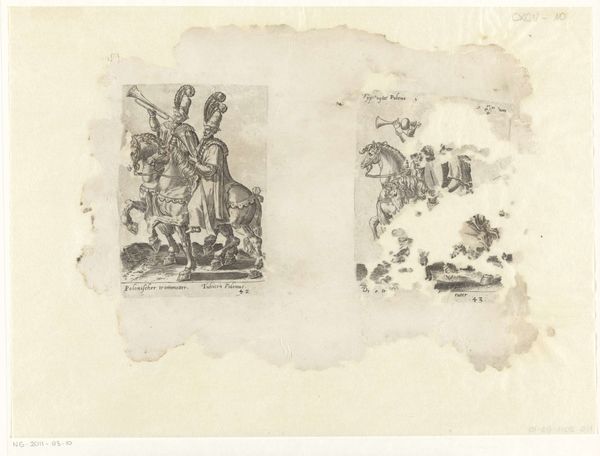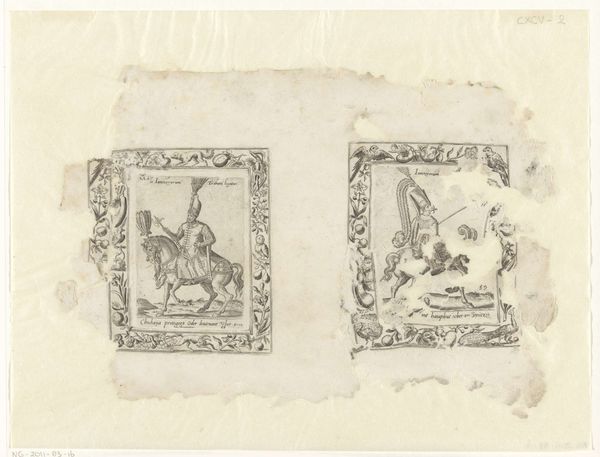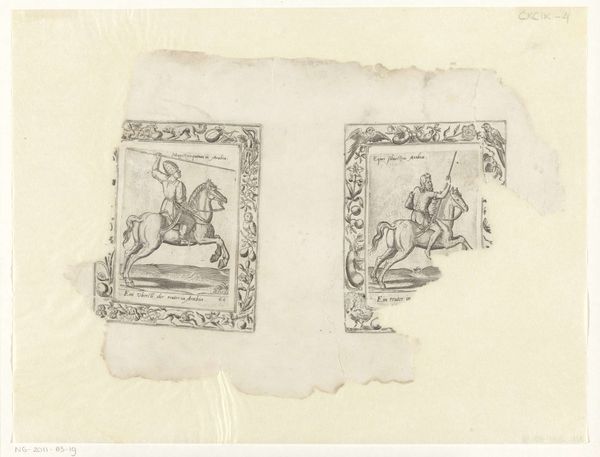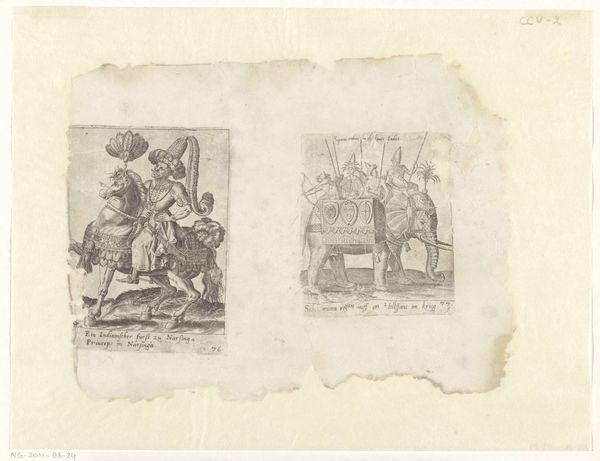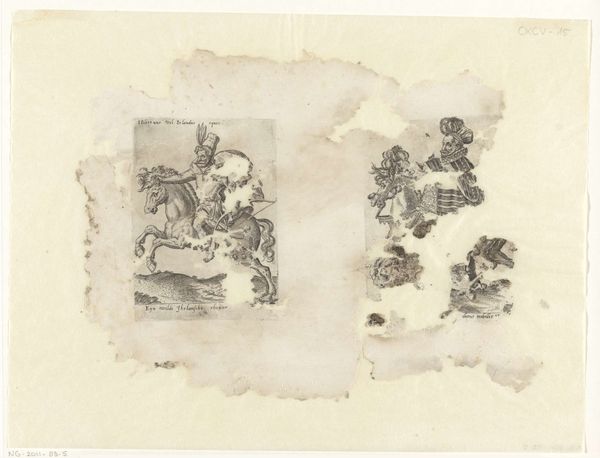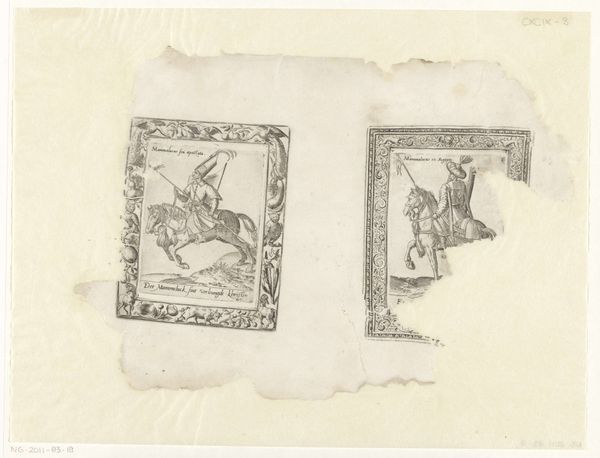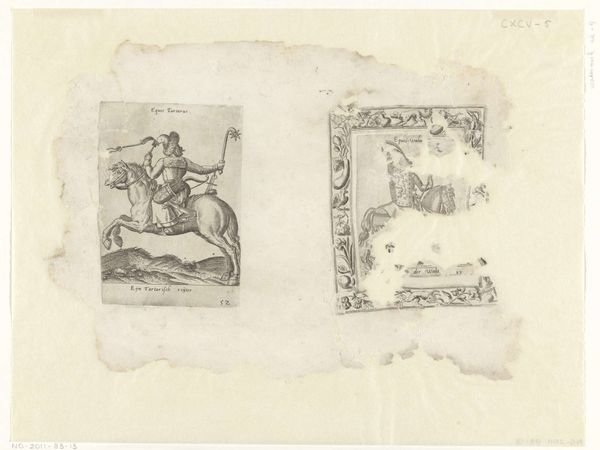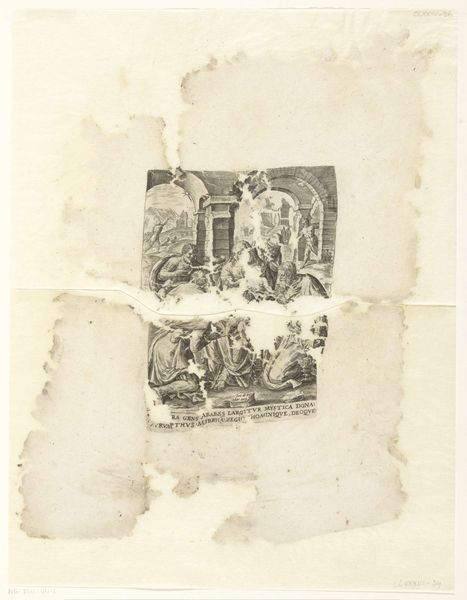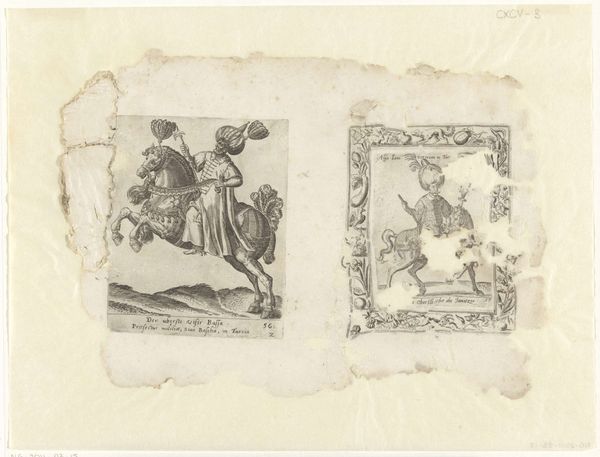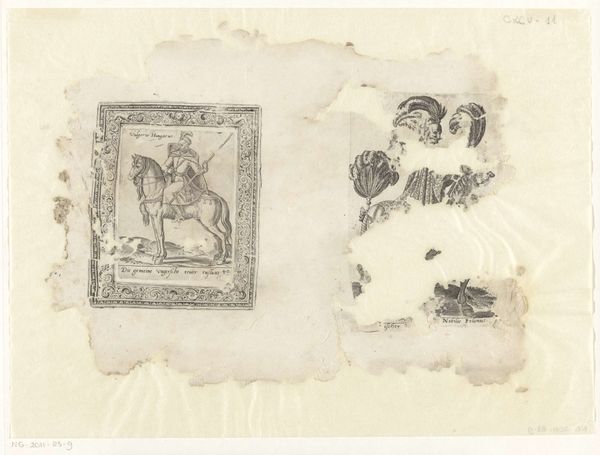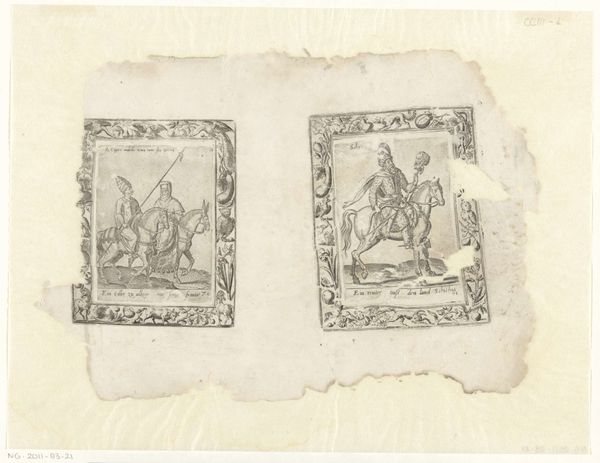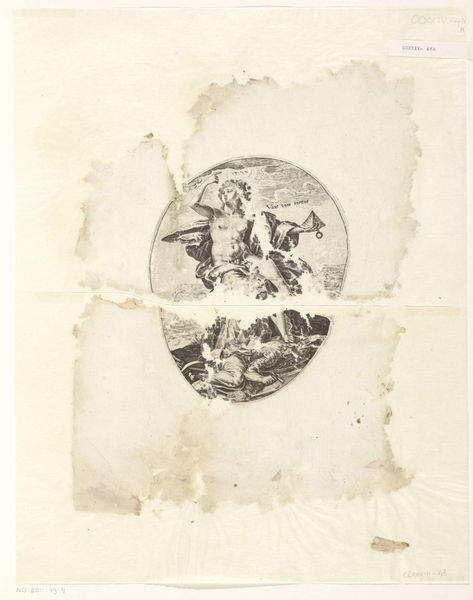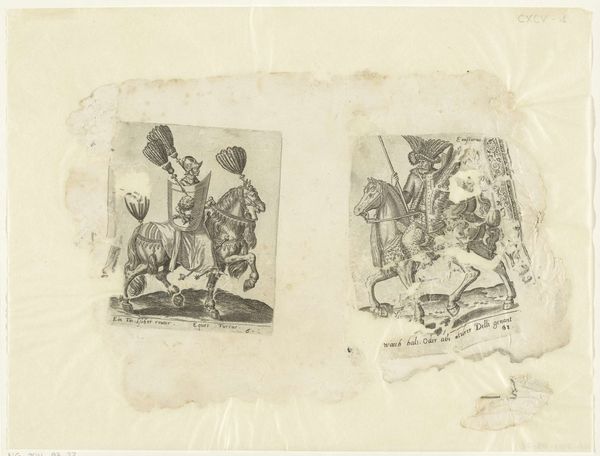
print, etching, engraving
# print
#
etching
#
etching
#
figuration
#
11_renaissance
#
history-painting
#
northern-renaissance
#
engraving
Dimensions: height 245 mm, width 340 mm
Copyright: Rijks Museum: Open Domain
Curator: Here we have Abraham de Bruyn's "Russian and Lithuanian Rider" from the late 16th century. It's an etching and engraving currently housed here at the Rijksmuseum. Editor: Immediately, I'm struck by the contrast. One rider looks like he's off to war, all armor and weaponry, and the other seems...almost ceremonial, more about spectacle than combat. It's like seeing two sides of the same coin. Curator: That's a keen observation. De Bruyn's print really captures a pivotal moment when military and cultural identities were being defined in Eastern Europe. Notice the detail in the Russian rider's chainmail. It's rendered with incredible precision, almost obsessive in its dedication. It screams "strength" and "preparedness". Editor: And look at the Lithuanian rider. All plume and flourish. Even the horse seems to be prancing. The falling hats... could they represent discarded tradition, maybe? Or simply battlefield losses depicted allegorically? Curator: Precisely, it could be hinting at status and the fleeting nature of power or fortune, echoing that classic vanitas theme of the time. These aren’t just portraits, they are statements about different approaches to power, dress, and potentially, different values within those societies. It’s fascinating that de Bruyn, likely from his vantage point in the Netherlands, captured such nuance. Editor: It also reveals how identities were perceived, or *performed*, during the Renaissance. The visual language – the objects they carry, their posture, it's all carefully curated to convey specific meanings. One could read it as a very early form of propaganda, each rider embodying a distinct political message. Curator: I agree, and that's the genius of it. Even across centuries, the contrast continues to provoke. Do we see tradition weighed down by armor, and modernization signified by ornamentation? Editor: Or are we simply seeing different modes of presentation, different costumes donned for a geopolitical stage? Regardless, it invites one to consider: what shields do *we* choose to wear today? Curator: Absolutely. De Bruyn's work offers a timeless meditation on appearance, intention, and the symbols that shape our understanding of one another. Editor: Indeed. And next time you see someone in uniform or with extravagant jewelry, remember these riders. Ask yourself: What's the message *behind* the costume?
Comments
No comments
Be the first to comment and join the conversation on the ultimate creative platform.
